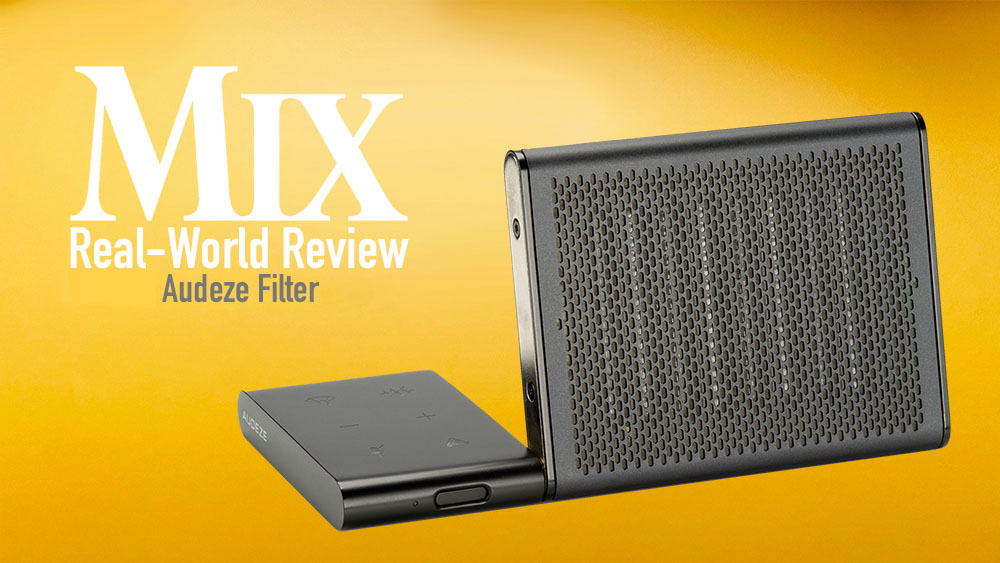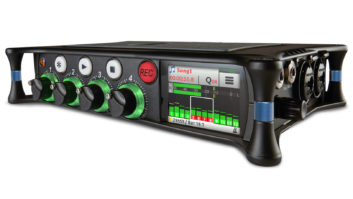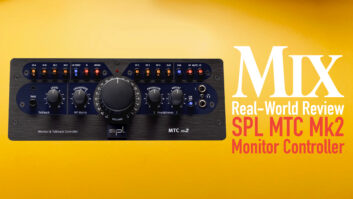
| MIX VERDICT: AUDEZE FILTER |
| THE TAKEAWAY: “Audeze Filter is a modern version of a speakerphone, and I now use it every day.” |
| COMPANY: Audeze • www.audeze.com PRICE: $250 PROS: • Purpose-built for conference calls • Multiple beamforming pickup patterns available CONS: • Max. Noise Reduction setting can affect voice quality |
New York, NY (April 30, 2024)—Okay, I understand that this might not appear to be a typical “professional audio product” for review in Mix, but engineers and producers are regular people, too, and they need to communicate outside the studio more than ever—with clarity and a high-quality signal. Toward that end, Audeze, now owned by Sony Corporation, has released Filter.
Filter is a battery-powered, Bluetooth-enabled speakerphone purpose-built for conference calls. It is the pro audio manufacturer’s first non-headphone product and uses several advanced technologies that work in tandem to solve the typical audio problems with all speakerphones.
First is environmental noise interfering with the intelligibility of a voice because of the extra mic gain required to pick up distant or quiet voice(s) using an omni-directional microphone. Filter uses a process involving what’s called a Deep Neutral Network and a library of more than 500,000 noise samples to detect and accurately remove noise.
DNN has three levels of noise suppression— Low, Medium and High—selectable from the touch controls on the unit’s surface. (You can also turn noise suppression Off.) All of Filter’s adjustments and settings are accessed via touch-sensitive controls. In general, I found myself using only enough noise reduction as required. With maximum noise reduction, there is some degradation to your voice’s quality, more similar to the sound quality of a cell phone. Still, DNN works amazingly well.
Lauten Audio Snare Mic — A Mix Real-World Review
With background noise removed, Filter then uses variable-pattern microphone technology called Beamforming. The pickup pattern of the two microphones on either side of its flat speaker is adjustable from Off (or omnidirectional) to 70 degrees (Narrow), 90 degrees (Medium), or 105 degrees (Wide).
I found that the Wide pickup pattern worked fine in most rooms, though if the room you are in is overly reverberant or if it is only you talking, you may want to use a narrower pickup. Beam Forming and DNN work well together; still it helps to experiment to get the best results in a particular room or office space, with or without colleagues.
When folded flat, Audeze Filter measures 76 mm wide x 152 mm tall x 11 mm thick—about the size, dimensions, weight and “feel” of a typical smartphone. Filter’s bifurcated design allows its touchscreen controller to lay flat on a desktop or table while Audeze’s flat 70 mm by 105 mm planar magnetic speaker can be aimed at the person using it.
You “audition” the pickup by recording and playing back a short 10-second audio clip to try different patterns. I’m using Filter over USB-C as an audio interface and sometimes just as a speakerphone connected to my iPhone via Bluetooth.
Audeze Filter is a modern version of a speakerphone, and I now use it every day. It has been designed and built for hybrid engineers who bounce back and forth between the office and studio or the busy studio professional who travels frequently.
It sells for $250 MSRP and comes with a deluxe carrying pouch and free app.







